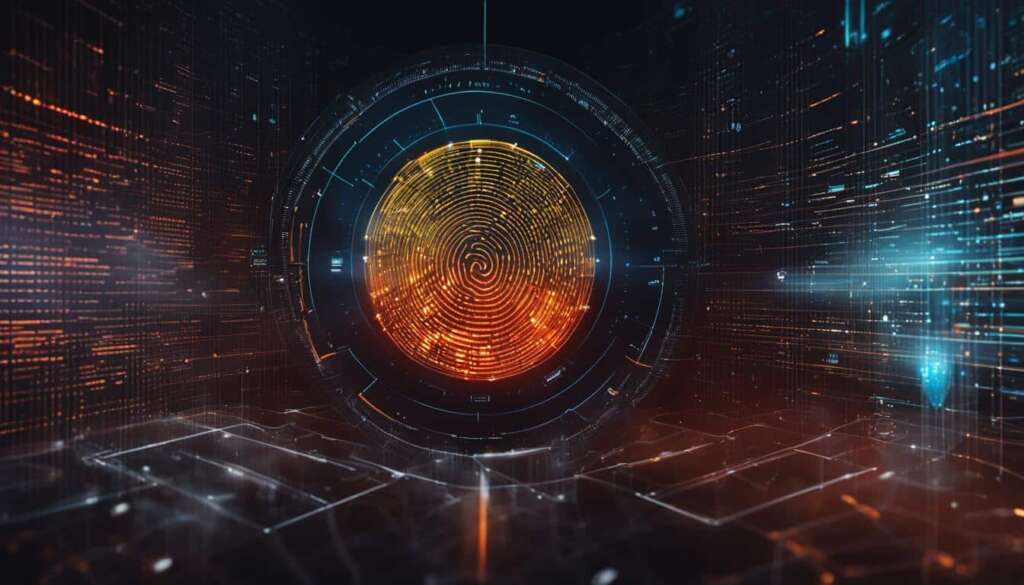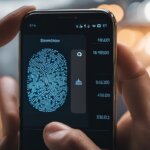Table of Contents
Biometrics is a term used to describe the unique physical or behavioral characteristics that can be used to identify an individual. These characteristics include fingerprints, facial recognition, voice recognition, iris scans, and more. The use of biometrics has become increasingly popular in recent years, and it has revolutionized the way we approach security and authentication.
In this FAQ guide, we will explore the meaning of biometrics and provide a comprehensive overview of its uses and impact on security. Whether you are new to biometrics or just looking to learn more, this guide will provide you with a solid understanding of this exciting field.
Key Takeaways
- Biometrics refers to unique physical or behavioral characteristics that can be used for identification.
- Biometric technology has become increasingly popular in recent years and has revolutionized security and authentication measures.
- This FAQ guide provides a comprehensive overview of biometrics and its impact on security.
- Common applications of biometrics include access control, identity verification, and surveillance systems.
- Biometrics offers increased convenience and enhanced security measures for a variety of industries.
What is Biometrics?
Biometrics involves the use of unique biological characteristics for identification and authentication purposes. The term ‘biometrics’ comes from the Greek words ‘bios’ meaning life and ‘metron’ meaning measure. In essence, biometrics refers to the measurement and analysis of a person’s physical and behavioral attributes.
Biometric characteristics include:
- Fingerprints
- Iris and retina patterns
- Facial recognition
- Voice patterns
- Hand geometry
These characteristics are unique to each individual and are difficult to forge or replicate. By using biometrics, organisations can effectively identify individuals and authenticate their access to secure areas and information.
“Biometric technologies are becoming increasingly widespread, with applications ranging from airport security to mobile phone authentication.”
As technology continues to advance, biometrics is becoming more prevalent in our daily lives. In the following sections, we will explore the different applications of biometrics and examine its impact on security.
The Applications of Biometrics
Biometric technology is used in various industries for different purposes. In this section, we will explore some of the most common applications of biometrics.
Access Control
One of the most widespread applications of biometrics is access control. Biometric access control systems use human characteristics such as fingerprints, facial recognition, and iris scans to identify individuals. Once an individual is recognzed, access is granted to restricted areas. This provides a more secure and convenient way of managing access to sensitive locations such as data centers, hospitals, and airports.
Identity Verification
Biometrics is also used in identity verification processes. With the rise of online services and the increased risk of fraud, biometrics helps to ensure that the individual is who they claim to be. Biometric identity verification is commonly used in banking and financial services, as well as for government identity documents such as passports and national IDs.
Surveillance Systems
The third major application of biometrics is in surveillance systems. Facial recognition and gait analysis technologies are used to identify individuals in CCTV footage. This is increasingly being used in law enforcement as a tool for tracking and locating criminal suspects. However, the use of biometric surveillance technology raises serious concerns about privacy and civil liberties.
While these are some of the most common applications of biometrics, the technology is also used in other areas such as healthcare, voting systems, and event management.
“Biometric technology is used in various industries for different purposes. In this section, we have explored some of the most common applications of biometrics.”
The Impact of Biometrics on Security
The integration of biometric technology has had a substantial impact on security measures. With the use of biometric authentication, security systems are strengthened, and identity theft is prevented.
One significant advantage of biometric technology is its ability to identify individuals accurately. As biometric identifiers are unique to each person, it is difficult for fraudsters to replicate or forge them. Biometric authentication enhances security in high-risk areas by implementing facial recognition or fingerprint scanning, thereby allowing only authorised people access to secure locations.
Another significant impact of biometric technology on security is seen in the prevention of identity theft. Biometric data is kept secure, making it challenging for criminals to steal or manipulate biometric identifiers and gain access to sensitive information. Biometric authentication provides secure access to devices, ensuring that only authorised users can interact with the system.
The impact of biometric technology on security extends beyond authentication and access control. Biometric sensors are now integrated into surveillance systems, which offer real-time facial recognition, license plate recognition, and other forms of biometric recognition. The use of biometric surveillance helps identify potential threat actors and prevents criminal activities.
Overall, the impact of biometric technology on security is significant and far-reaching. By enhancing authentication, preventing identity theft, and providing real-time surveillance, biometric technology is strengthening security measures across industries and sectors.
Conclusion
In conclusion, biometrics technology is becoming increasingly popular and is being used in various industries. It offers a convenient and secure method of authentication and identification. By using unique biological characteristics such as fingerprints, facial recognition, and iris scans, biometrics technology can prevent identity theft and enhance overall security measures.
We have explored the meaning of biometrics and provided a comprehensive FAQ guide to help you understand its applications and impact on security. Biometric authentication systems are being implemented in various sectors, including healthcare, finance, and law enforcement, to improve efficiency and security.
In the future, we can expect to see more advanced biometric technology being developed and integrated into everyday life. However, it is important to note that biometrics also raises concerns about privacy and data protection. It is crucial that the use of biometrics is regulated and implemented in an ethical and responsible manner.
FAQ
What is biometrics?
Biometrics refers to the measurement and analysis of unique physical or behavioral characteristics of an individual. These characteristics are used for identification and authentication purposes, offering a more secure and accurate method of verifying identity compared to traditional methods such as passwords or ID cards.
What are the applications of biometrics?
Biometrics has a wide range of applications across various industries. It is commonly used in access control systems, allowing individuals to gain entry to secure areas based on their unique characteristics like fingerprints, iris scans, or facial recognition. Biometrics is also used for identity verification in processes like e-passports, mobile banking, and employee attendance management.
How does biometrics impact security?
Biometrics significantly enhances security measures. By using unique biological characteristics for identification and authentication, it provides a more reliable and accurate method of verifying identity, preventing unauthorized access, and reducing the risk of identity theft. Biometric technology also enables faster and more convenient authentication processes, improving overall safety and efficiency.













